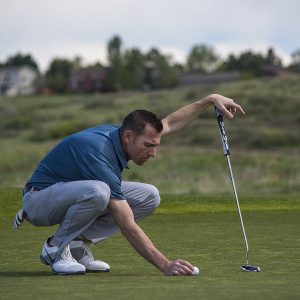The official Rules of Golf have changed for 2019. Make sure you know all of the USGA & R&A’s amendments
By Jon Levy
You’ve seen the chatter. Especially with the likes of PGA Tour star, Bryson DeChambeau, creating an all-out media frenzy by putting with the flagstick in and dropping from knee-high level in what we could call an “artistic” fashion.
Shortened and simplified
It’s far from a secret that the official Rules of Golf changed on Jan. 1, 2019. After a healthy incubation period in 2018 and a lot of debate, the USGA and R&A concluded their mission to make golf simpler, while maintaining its integrity, was complete.
In essence, the 34 previous Rules of Golf were shortened to 24. As you can see from the below guide circulated by USGA and R&A, there are 20 rules they define as the most relevant to know.
Some of the more impactful changes include reducing ball search time from five minutes to three, dropping from knee height instead of shoulder height and being allowed to putt with the flagstick in when on the putting green.
The general theme falls under an intention of operating under more logic, fairness and ease of comprehension regarding what became a complex set of parameters to follow.
With that context explained, take a look at the 2019 Rules of Golf changes in detail below, so you’re fully prepared next time you step onto the first tee.
Guide to the 2019 Rules of Golf Changes
Ball at Rest
- Ball moved during search: No penalty for accidentally moving your ball
- Ball moved on the putting green: No penalty for accidentally moving your ball or ball marker
- Deciding why a ball moved: A new standard to determine if you caused your ball to move
- Replacing ball when original spot is not known: Now placed rather than dropped
Ball in Motion
- Ball in motion accidentally deflected: No penalty if deflected by you, your equipment or your caddie
Taking Relief
 Fixed distances used for measuring relief areas: Now a fixed size of one or two club-lengths using the longest club in your bag, other than a putter, instead of one or two club-lengths with any club in your bag
Fixed distances used for measuring relief areas: Now a fixed size of one or two club-lengths using the longest club in your bag, other than a putter, instead of one or two club-lengths with any club in your bag- Measuring relief area where a ball is dropped and played: Ball now must come to rest within the relief area, instead of additional distance given outside of the drop area
- Dropping: Ball can now be dropped from knee height, instead of shoulder height
- Time allotted for ball search: Shortened to three minutes from five minutes
- Substitution of ball when taking relief: Now allowed with free drops and penalty drops, instead of penalty drops only
- Embedded ball: Relief allowed without penalty anywhere in the “general area” (new term for “through the green”), instead of fairway areas only
Areas of the Course
 Putting green
Putting green
-
- Replacing a ball moved: Now always replaced on its original spot, even if moved from the wind or no clear reason
- Repairing damage: Can now repair almost any damage to the putting surface (including spike marks and animal damage), as opposed to previous rule dictating repairs only for ball marks or old hole plugs
- Touching line of play: Now no penalty, as long as doing so does not improve the conditions for the stroke
- Ball played hits unattended flagstick in hole: No longer a penalty (putting with the flagstick in is now allowed)
Penalty areas
- Penalty areas: Areas such as jungle and lava rock, etc., in addition to other areas of water, may now be marked as Red or Yellow penalty areas. Note: The term “hazard” will also be replaced in all instances by “penalty area”
- Red-marked penalty areas: Expanded discretionary use to mark any penalty area Red (vs. Yellow) so lateral relief is always allowed, instead of Red penalty areas only consisting of locations that make it impossible for the ball to be dropped behind the hazard
- Opposite side relief for red penalty areas: No longer allowed from where the ball last entered the penalty area
- Touching or moving loose impediments or touching ground in a penalty area: No longer a penalty, instead of the previous penalty of loss of hole/2-strokes added
Bunkers

- Loose impediments or touching sand in bunker: No longer a penalty when hand or club touches sand when ball is in the bunker; excluding when sand is touched to test bunker conditions, during a practice swing, when the club is grounded in area directly behind or in front of the ball, or in making a backswing for the stroke played
- Unplayable ball: Now an extra option to give relief outside of a bunker under a penalty of two strokes, instead of no relief outside of the bunker permitted, other than playing from the location of the last stroke played
Equipment
- Use of clubs damaged during a round: Now allowed, regardless if damaged during a stroke played or other reasons (like anger)
- Adding clubs to replace a club damaged during round: No longer allowed if you are responsible for the damage
- Use of distance-measuring devices: Now allowed, unless a local rule has been adopted to prohibit
Playing a Ball
- Caddie standing behind player to help alignment
 : No longer allowed while the player is setting up to a shot
: No longer allowed while the player is setting up to a shot - Caddie lifting ball on the putting green: Now allowed to lift and replace a player’s ball without specific authorization to do so
When to Play During a Round
- Pace of play: “Ready golf” encouraged, as opposed to farthest from hole playing first. Every stroke is also encouraged to take no more than 40 seconds
- Maximum score form of stroke play: A new “maximum score” form recognized, capping a player’s max score or a hole such as two times par or net double bogey, as set by the Committee
Player Behavior
 Expected standards of player conduct: New rules speaking to the high standards of conduct expected
Expected standards of player conduct: New rules speaking to the high standards of conduct expected- Code of player conduct: Committees given authority to adopt their own code of player conduct, with set penalties for breaches
- Intent to lift a ball: No longer required to announce intention to mark and lift a ball (when a ball may be lifted and replaced or played from a different area)
- Judgement in estimating and measuring: A player’s reasonable judgement will not be second-guessed based on later evidence (such as video review during televised tournaments)











John,
thanks for this. For the “Maximum Score” rule, while it makes sense, it is still a little unclear. What does “as set by the Committee” mean? Who is the Committee, and how do you learn what they set it at?
Thanks,
Paul
Hi Paul! Great question. The maximum score rule is a new option that any given tournament committee can choose to adopt to their Local Rules. At the club level the tournament committee is usually made up of the golf professionals who handle rules disputes and scoring. The new max score rule only comes into play when it is specifically outlined on the Local Rules sheet that tournament organizers hand out before their competition starts. An opposite example is the rules change to distance measuring devices, which previously had to be specifically allowed by the Local Rules. As of 2019, a Local Rule is needed to say distance measuring devices are not allowed.
Very informative!